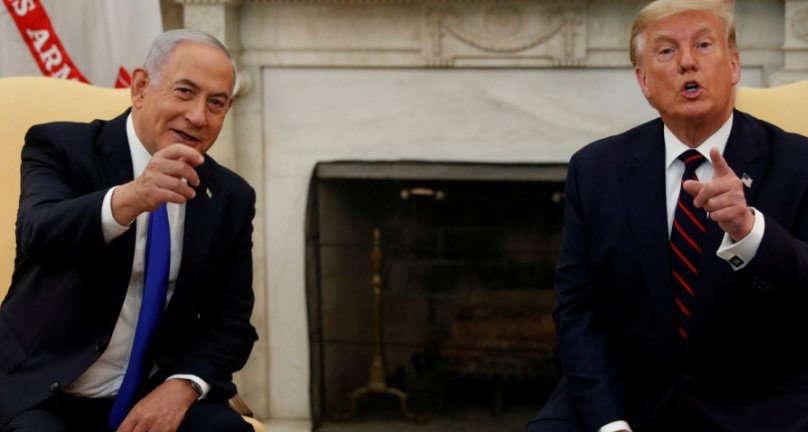President Donald Trump declared a major win with his Gaza peace plan in October 2025, claiming it brings a new era of stability to the Middle East after years of conflict. However, experts and reports from the region show that fighting continues, aid remains blocked, and deep issues like Palestinian statehood stay unresolved, raising questions about the deal’s strength.
The Announcement and Initial Reactions
Trump signed the Gaza peace plan during a visit to Egypt on October 13, 2025, calling it a historic step toward lasting calm. Leaders from several Middle East countries and Europe welcomed the move, seeing it as a chance to rebuild after intense fighting.
The plan includes a ceasefire that started soon after the signing, with promises of hostage releases and aid flow into Gaza. Trump highlighted how his team worked quietly for months before applying public pressure to seal the agreement.
Yet, celebrations were short-lived. Reports from Gaza indicate that not all violence has stopped, with clashes between groups and delays in key steps.

Experts note that while the deal aims to disarm Hamas and rebuild the area, many details remain vague. This lack of clarity has led to quick strains on the agreement.
Key Elements of the Peace Plan
The plan outlines a 20-point framework to end the conflict and start recovery. It builds on earlier efforts but adds new conditions shaped by talks with Israeli leaders.
Here are some main points from the plan:
- Hostage releases must happen within days, with remains returned soon after.
- Israeli forces will withdraw in phases, tied to Hamas giving up weapons.
- Aid corridors will reopen, but only if security checks are met.
- Arab states will help govern and rebuild Gaza, sidelining Hamas leaders.
A timeline helps show the planned steps:
| Date | Event |
|---|---|
| October 13, 2025 | Plan signed in Egypt |
| October 14-15, 2025 | Initial ceasefire and first hostage releases |
| Late October 2025 | Aid resumption and partial troop pullback |
| November 2025 | Talks on long-term governance |
These steps aim to create stability, but recent events show hurdles in following through.
Public sentiment on social media reflects mixed views. Many praise the end to immediate fighting, while others worry about hidden loopholes that favor one side.
Ongoing Challenges in Gaza
Violence has not fully ended despite the ceasefire. Israeli forces have clashed with Palestinians near border areas, and internal fights in Gaza add to the chaos.
Hamas has held back on releasing some hostage remains due to aid blocks at key crossings like Rafah. This has sparked accusations from both sides of breaking the deal.
Experts point out that without clear guarantees against restarting the war, trust remains low. Hamas leaders fear the pause is just a break before more attacks.
Rebuilding Gaza faces big obstacles too. The plan talks about turning the area into a thriving spot, but destruction from the conflict means years of work ahead.
Food and medical shortages continue, with reports of rising hunger among families. Aid groups call for faster access to prevent a humanitarian crisis.
Expert Analysis and Criticisms
Analysts argue that Trump has oversold the victory. One column describes the peace claim as premature, with fighting still reported as of October 16, 2025.
A key issue is the gap between Trump’s optimism and ground realities. While he pushes for a wider Middle East peace, including expanding accords with Arab nations, core problems linger.
Nimrod Novik, a policy expert, warns that a single provocation could restart the cycle of violence. This risk grows as Israel heads toward elections in 2026.
Trump’s focus on quick wins, like hostage returns, overlooks deeper needs. Critics say his approach treats Gaza more like a business deal than a path to true reconciliation.
Foreign leaders, including from Jordan, stress that real peace requires addressing Palestinian hopes. Without that, the region stays unstable.
Path to Palestinian Statehood
The plan mentions a possible way toward Palestinian self-rule, but details are thin. It speaks of creating conditions for statehood, yet Israeli Prime Minister Benjamin Netanyahu has rejected this outright.
This mismatch creates tension. Arab officials express anger over changes that give Israel more control, like veto power on key decisions.
Palestinians in Gaza and beyond feel sidelined. Reports show little momentum for talks on a two-state solution, demanded by much of the world.
Logical reasoning suggests that ignoring this issue could undo the ceasefire. Past conflicts show that without fair terms, resentment builds and peace fails.
Recent events, like protests in the region, highlight the demand for statehood. Trump’s team has stayed quiet on this, focusing instead on security and economy.
Future Implications for the Region
Looking ahead, the deal’s success depends on follow-through. Trump aims to expand it into broader accords, but attention span could be a problem as other global issues arise.
If the ceasefire holds, it could lead to economic growth in Gaza through investments. However, failure might spark wider unrest, affecting neighbors like Lebanon and beyond.
Experts predict that 2026 elections in Israel will test the plan. A shift in leadership could either strengthen or weaken the fragile peace.
The U.S. role remains key. With Trump’s push for a Nobel Prize, pressure is on to make this last, but history shows Middle East deals often face setbacks.
What do you think about the Gaza peace plan? Share your views in the comments and spread the word to keep the conversation going.
